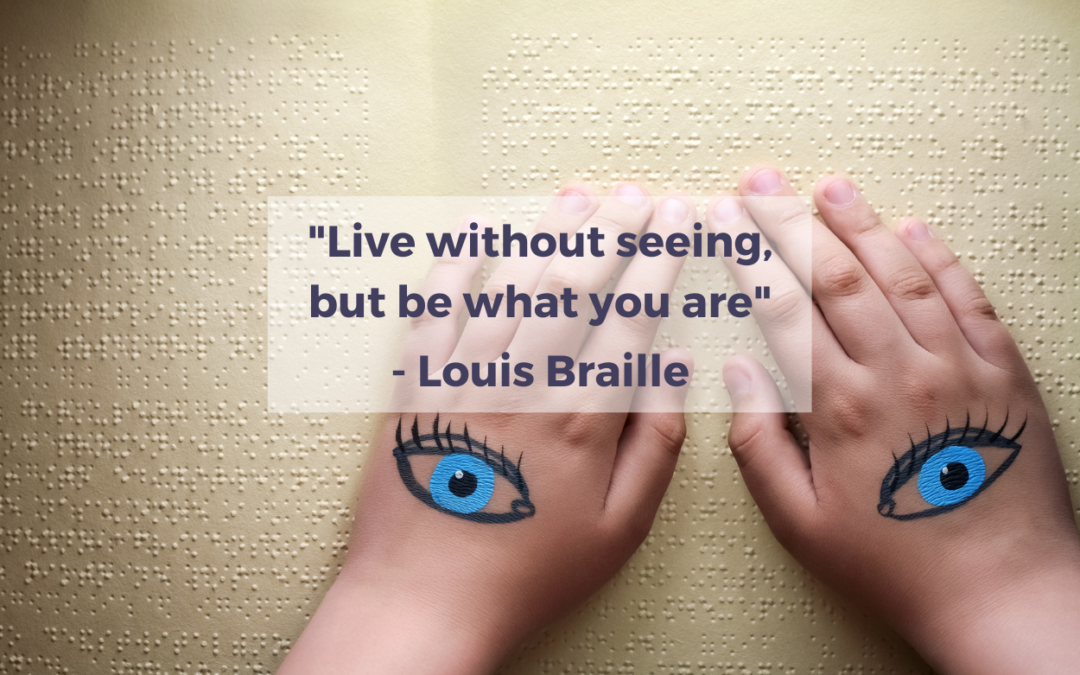The morning started with little kids already up, thrilled and energized to take a tour of Paris, moving in a row holding the rope with one hand to find way. On the one side it was Priest who was holding the corner and other corner of rope was in the hand of Peon.
“Poor kids”, someone commented, and little child started crying but his friend consoled him “don’t cry Braille, we are blind but not incapable and unable.” And later Louise Braille proved it.
This was a time when most people thought that blind people could never be able to read. This all begins in the early part of the nineteenth century in a village of Paris where Louise’s father used to make and harnesses the leather goods to sell. He used to cut and punch holes in the leather.
One day while playing with one of his father’s awls, Louise accidentally poked in one of his eyes. Slowly with time the wound became infected. Things got worsened and a few days later Louis lost his eye sight for both the eyes. The time was really difficult for him.
We all face hardship in our life and the thought of losing our sight is a horrifying prospect. Despite facing immense difficulties, he wasn’t going to let his disability slow him down one bit.
He couldn’t read or write, but he was the best student in the class during school days. Later Louis Braille studied at a school for blind students where the few books, made for the blinds were heavy and hard to read and the system was complicated to learn and difficult to use. .
That time a retired French army captain, Charles Barbier, invented a way for soldiers to send messages to each other at night. To represent it many dots were required, even for a single word. Louis decided to alleviate the captain’s system and worked hard to improve and upgrade. He used a pointed instrument called a stylus and a wooden writing board with paper, and continued working on it.
He spent three years—from ages 12 to 15 and invented a system of raised dots that enables blind people to read and write, a much simpler system. After two years of work, when Louis was 15 only, he accomplished his goal and finally created a new code for visually impaired.
He worked on writing books and music in his dot system. Two years later after his death, the French government approved his dot system. It was called ‘Braille’ after Louis’s last name. In 1878, Braille the system of reading and writing was approved for all blind people worldwide. With the initiative taken by the United Nations, Braille has been adapted by almost every language worldwide.
In fact his invention opened the doors of knowledge to all those who cannot see. To commemorate birthday of inventor of Braille, we celebrate World Braille Day, every year on January 4th. Even, life under lockdown has posed several issues for the visually impaired. They witnessed the most the loneliness and depression and pandemic has revealed how critically important it is to produce vital information in accessible formats, including in Braille and audible format for them.
Thanks!


Nic zycia jest mieszanym wloknem, dobro i zlo przewijaja sie razem. – Nothing of life is a mixed thread, good and bad coexist together. – William Shakespeare
Czlowiek nie moze zyc, nie wiedzac, po co zyje” – Man cannot live without knowing what he is living for – Gustaw Herling
Cecha talentu jest niemoznosc pisania na zamowienie… Poza tym to Zgadzam sie z Toba w 100 i popieram w/w poglady w soposb preSubiektywny 🙂 A feature of talent is the inability to write on request … Besides, I agree with you and support the above-mentioned views. – E. Zegadlowicz.
Fantastyczny tekst Brawo! szczegolnie spodobala mi sie szata graficzna twojego bloga 🙂 zapraszam do siebie…
Fantastic text Bravo! I especially like the graphic design of your blog 🙂